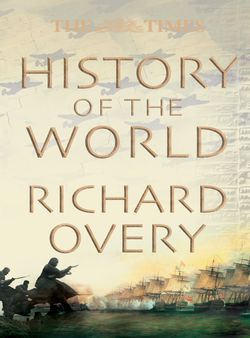Читать книгу The Times History of the World - Richard Overy - Страница 36
475 BC TO AD 220 THE UNIFICATION OF CHINA
ОглавлениеThe process of China’s nation- and empire-building began with the political anarchy of the Warring States period but ended with a highly centralized state headed by a single monarch and an efficient bureaucracy that reached village level. The new system attained its full glory under the Han, whose wealth and territory matched the Roman empire.
Throughout the Warring States period (475–221 BC) seven major rivals contended for supremacy. At first, following the decline of the power of the Chou king, the principal contenders were the old-established dukedoms of Ch’i, Ch’u, Han and Wei. But from the beginning of the 3rd century BC the border state of Ch’in established firm control over the northwest and west, adopting the title “king” in 325 BC, and during the latter half of the 3rd century BC it began gradually destroying its rivals.
Throughout China, it was a period of constant warfare, waged on a massive scale by powerful and well-organized political units. But at the same time, this Warring States period coincided with major economic and social changes. The introduction of iron tools from about 500 BC and the use of animal power for cultivation greatly increased agricultural productivity. Population multiplied, commerce and industry flourished and large cities emerged. It was also a period of innovation in technology and science, and of philosophical ferment, in which the main schools of thought—Confucianism, Daoism and Legalism—took shape.
That the Ch’in emerged from this period to unify China under their leadership was at least in part due to the success of the “Legalist” system adopted by them in the 4th century, whereby a universal code of rewards and punishments was established that induced a high level of popular obedience and military discipline. Under this system, a centralized bureaucracy took measures to improve the production and distribution of grain, and organized the population to provide manpower for construction works and for the army, enforcing the system through a ruthless penal code.
THE FIRST EMPEROR
When the Ch’in king, Shih Huang-ti, was crowned the first emperor of China in 221 BC, the “Legalist” institutions were extended throughout the country. But although the emperor tried to eliminate all hostile factions, under the burdens imposed on the people by his military campaigns and vast construction works, his dynasty collapsed in a nationwide rebellion in 206 BC, shortly after his death.
After a period of civil war a new dynasty, the Han, was established by Liu Pang (256–195 BC). Copying the general outlines of the Ch’in system, but softening its harshness and in part restoring a system of feudal principalities, the Han gradually evolved an effective central government and system of local administration. The “Legalist” approach was replaced by Confucianism which emphasized benevolent rule and good statesmanship.
HAN EXPANSION
The Ch’in had taken strong defensive measures against the nomad Hsiungnu (Huns) in the north. Under the emperor Wu-ti (140–87 BC), though probably driven by his generals in the north, Han China again took the offensive against the Hsiungnu, and opened up the route to central Asia known as the Silk Road. A large export trade, mainly in silk, reached as far as the Roman empire. The Han also reaffirmed the Ch’in conquests in the southern region, eliminated the Yüeh kingdoms of the southeast coast, and occupied northern Vietnam. Chinese armies also drove deep into the southwest, seeking to establish Han control. In addition, Wu-ti’s armies placed parts of northern Korea under Chinese administration.
The Han empire grew extremely prosperous and China’s population reached some 57 million. Many large cities grew up and the largest, the capital Ch’ang-an, housed a population of a quarter of a million and was the centre of a brilliant culture. At the beginning of the Christian era the Han empire rivalled that of Rome in size and wealth.
But under a series of weak emperors during the latter half of the 1st century BC, the authority of the throne was challenged by powerful court families. In AD 9 Wang Mang usurped the throne. His reign (the Hsin dynasty, AD 9–23) ended in a widespread rebellion that restored the Han (Later Han, AD 25–220), and the capital was moved to Lo-yang.
THE COLLAPSE OF THE HAN EMPIRE
After some decades of consolidation, in the late 1st century the Chinese resumed active hostilities to drive the Hsiungnu westward to central Asia. But trouble with the Chiang tribes of the northwest and virulent factionalism at court had seriously weakened the Han state by AD 160. A wave of agrarian distress culminated in 184 in a massive uprising led by the “Yellow Turbans”, a religious movement based on popular cults. Although the Han survived in name until 220, power now lay with regional commanders. In 220 the empire was divided into three independent kingdoms, ushering in a long period of territorial fragmentation.
